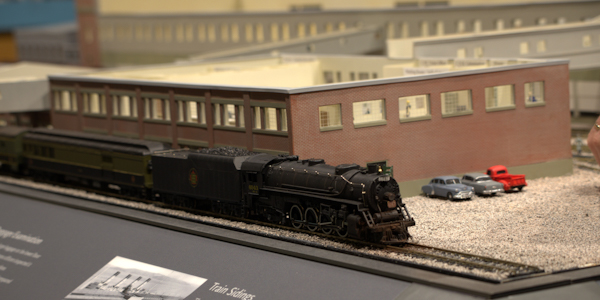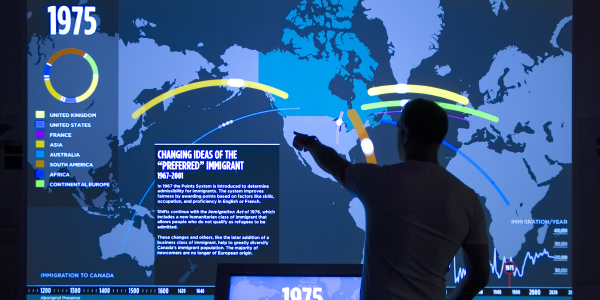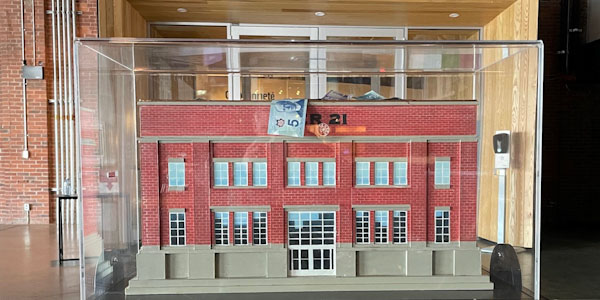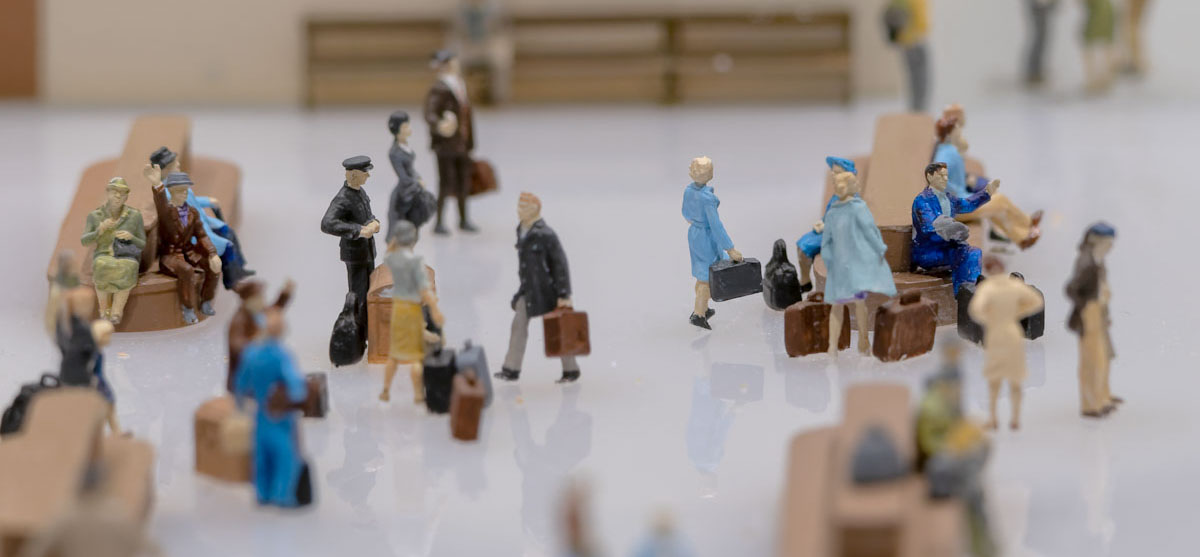
Passengers await their train to destinations across Canada.
The model of Pier 21 is full of activity.
The miniature representation is a favourite of many visitors of the Museum. The model, roughly 8 feet by 4 feet, depicts a day in the mid to late 1950s, during the period when the building was one of the country’s busiest immigration gateways.
Between 1928 and 1971, Pier 21 was the point of arrival for nearly a million immigrants - mostly from Europe - arriving by sea. The 1950s represented a peak of activity at the facility. Through the 60’s, air travel began to take over as the primary way people immigrated from overseas, leading to Pier 21’s eventual closure.
“I always think of it as the city within the city,” says Dan Conlin, the Museum’s curator, who talks about the facility having its own “dining room, hospital ward, little prison…train station.”
On the model, the roof of the facility is cut away so visitors get a bird's eye view into the world. Close inspection reveals extraordinary details.
As Conlin explains, “The whole idea is to illustrate the processes as well as the site features - all the stages an immigrant would go through until you boarded the train to go to your new home.”
People wait on benches, go through customs and medical screenings, gather luggage, change infants’ diapers in private rooms, and wait to board trains. There are railway porters, nuns, immigration officers, and dock workers. There are children and elderly people. Some new arrivals are in detention, caught up in the question of whether they’ll be allowed into the country or sent home.
Small worlds have a big impact
The model, like the Museum itself, celebrates its 25th anniversary this year. Over the years there have been improvements, corrections and additions. Says Conlin, “it remains outstandingly popular with visitors and staff and I think it's a real testimony to the power of miniatures. Nowadays, everything is digital and screens or projections, but, you know, a beautifully done miniature that's well thought out captivates the public and gives us this wonderful tool to create an understanding of what happened at the Pier 21 site.”
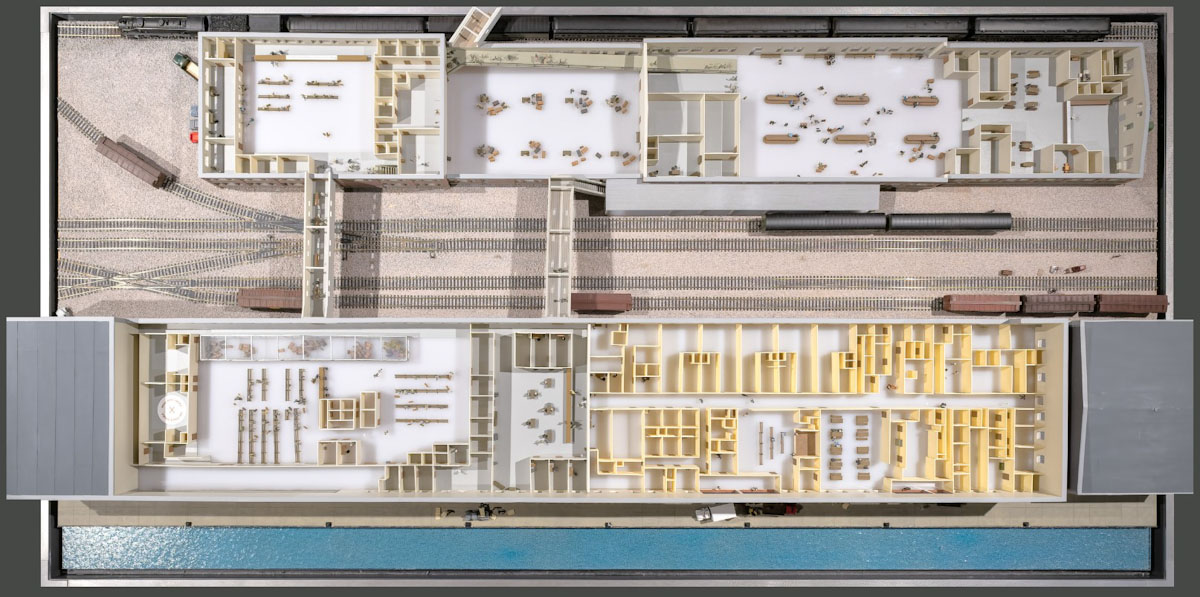
The model includes the Pier 21 building (bottom), the immigration annex (top) and railyard.
Look closer
There are many details that open up a portal into a larger story.
In a dedicated waiting area, behind a counter labelled “religious organizations” stand two nuns in grey habits. They are members of the Catholic Sisters of Service, one of the charitable religious organizations that offered support to immigrants arriving at Pier 21. The Sisters of the Service on site spoke multiple languages, making them an invaluable resource for people arriving from countries all over Europe.
Immigrants bringing food from home from home were disappointed to have the food confiscated at customs. At a customs counter in the pedway, a large bin holds confiscated food (and other) items. To protect Canada from invasive species and food-borne disease, confiscated food, seeds, plants and soil were incinerated.
Other details are even harder to detect: At the head of one of the trains is a steam locomotive carrying a load of real coal, which Conlin retrieved from the old railway yards in Kentville, Nova Scotia and crushed into small pieces with a hammer.
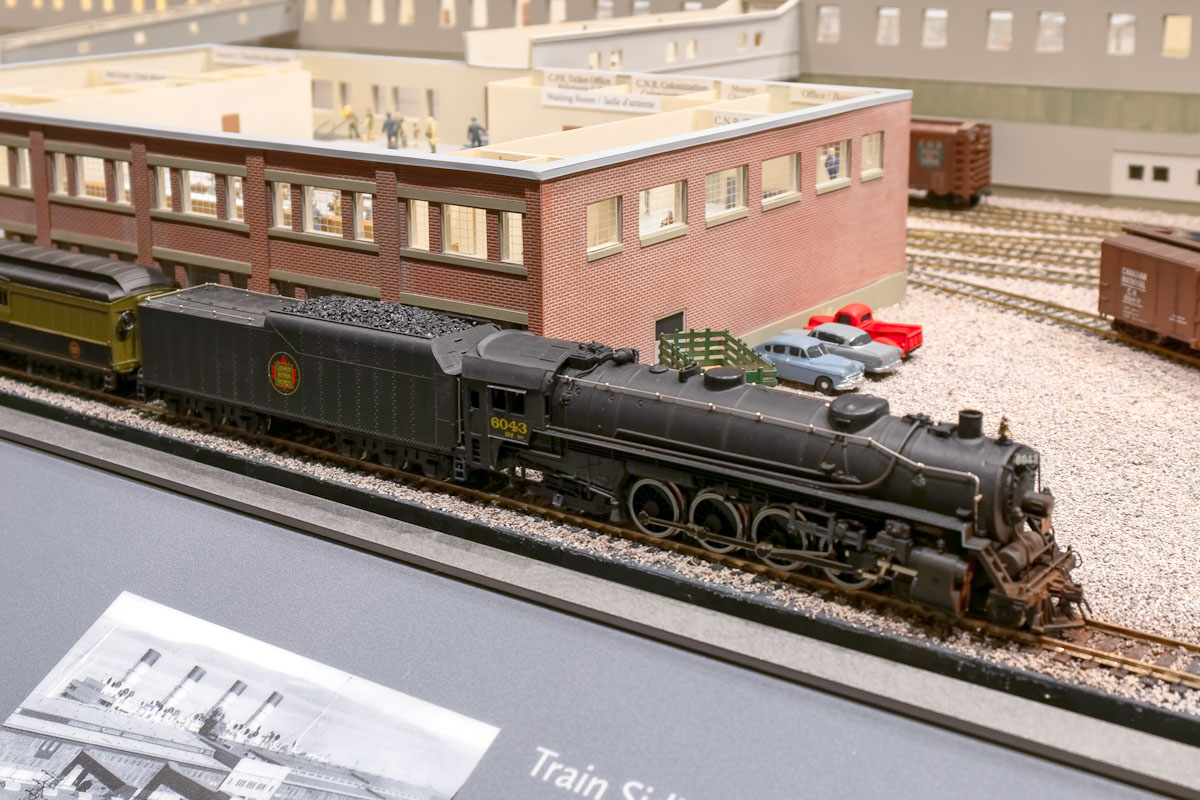
The model steam locomotive carries a load of real coal gathered from an old railyard.
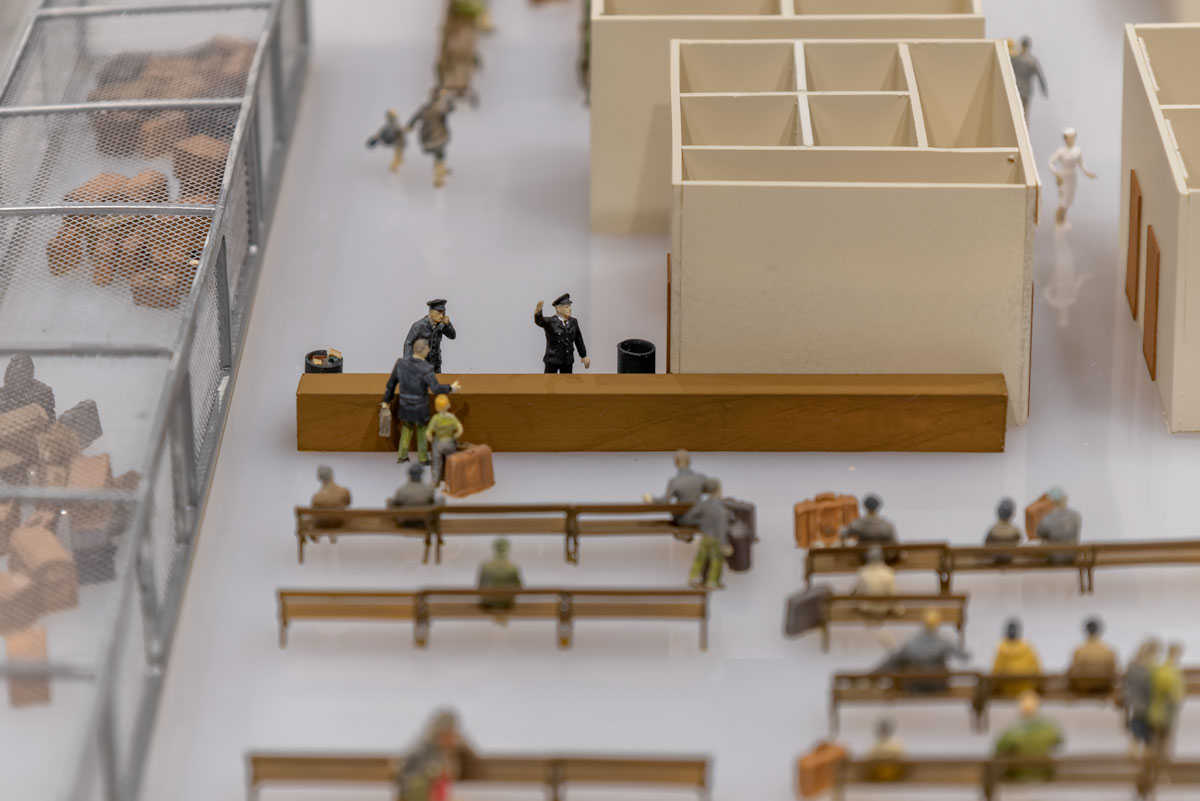
Customs officials call forward people to have bags inspected.
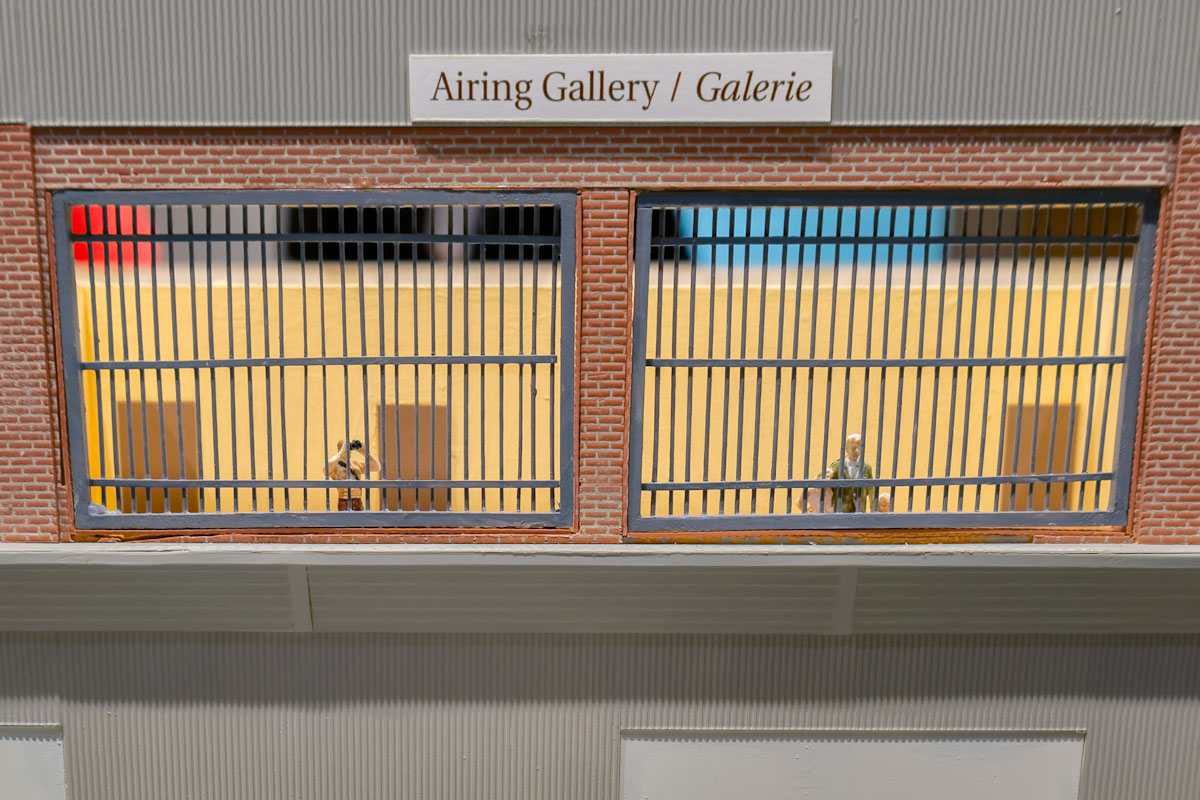
The Airing gallery gave passengers in Pier 21’s detention area access to fresh air.
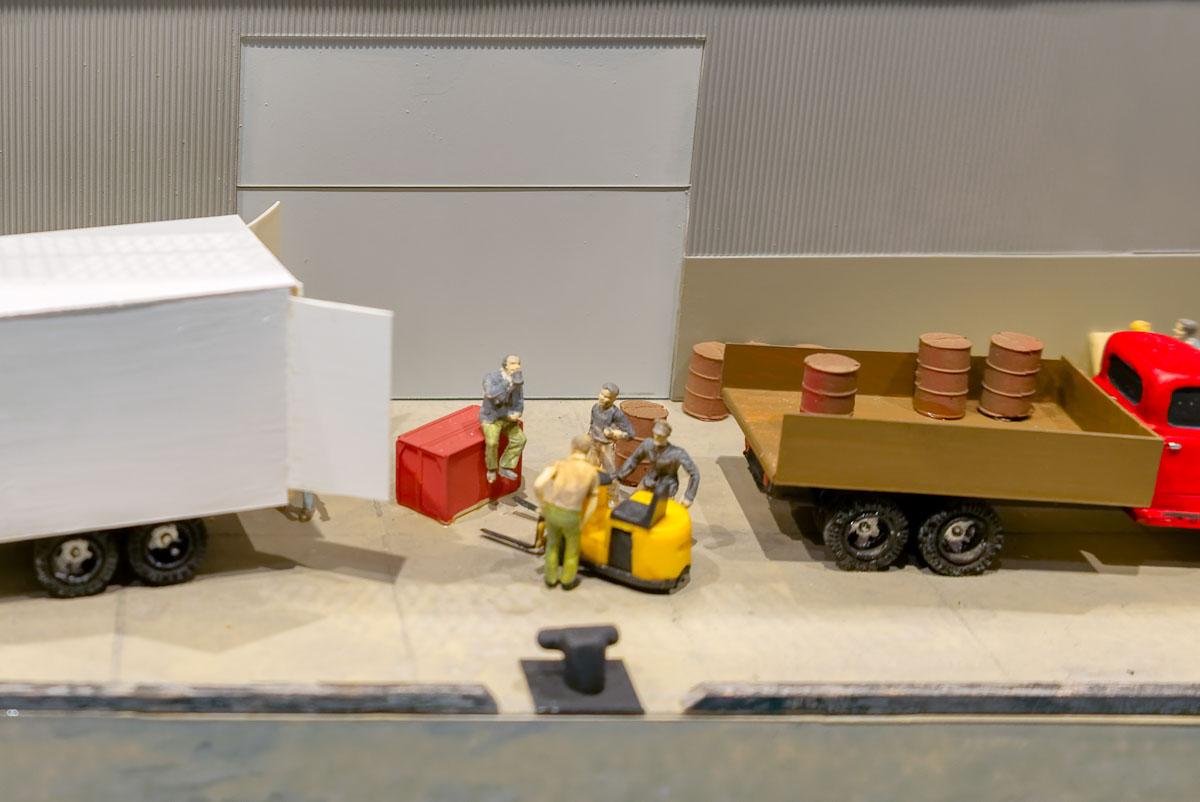
Dock workers take a break from loading freight into trucks.
Representation matters
In the Pier 21 era, exclusionary Canadian immigration policy explicitly and implicitly favoured white European immigrants. Consequently, most of the people depicted in the model are white. The few exceptions carry interesting stories.
Two men in suits sit on a bench waiting for their train. They are students from the West Indies, explains Conlin, in Canada on a student visa and bound for their college. The people of the West Indies were British subjects. But they were also largely descended from enslaved Africans which made them the target of policies of racial exclusion. An initiative to admit people (mostly women) from the West Indies as domestic workers had been launched in 1955, but these men would have been among a small number of students from the West Indies whom Canada admitted in this era.
At the back of one train, a Black porter swings down from a sleeping car. His presence is a portal into a long and fascinating history. From the late 1800s Canadian rail companies employed Black sleeping car porters. Porters were paid low wages and faced difficult working conditions. They were expected to prepare sleeping berths, shine shoes, babysit children, and deal with passengers who sometimes became drunk and disorderly. (Some said they were effectively babysitting adults as well). The Black porters formed one of the first and most influential communities of Black labourers in Canada, including through their union. You can discover more about the history of their history on Canadian Museum of Human Rights website.
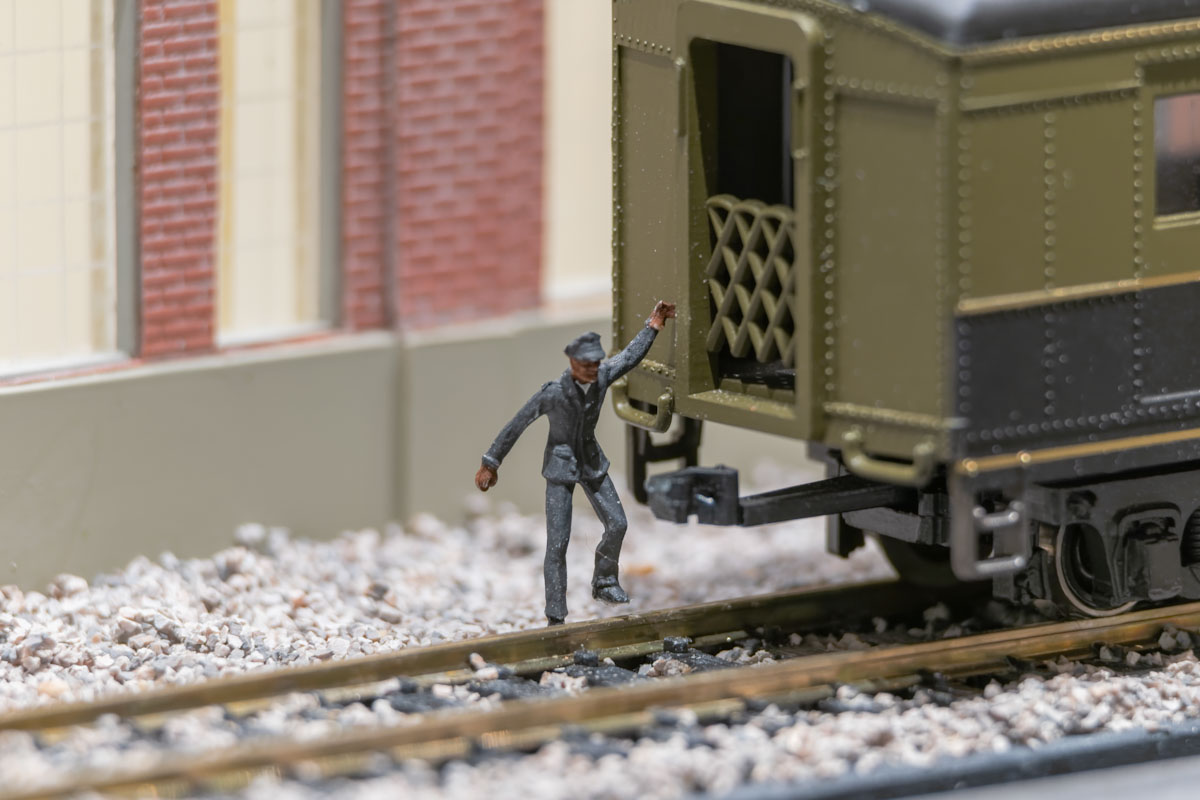
A Black sleeping car porter swings down from the Colonist sleeping car.
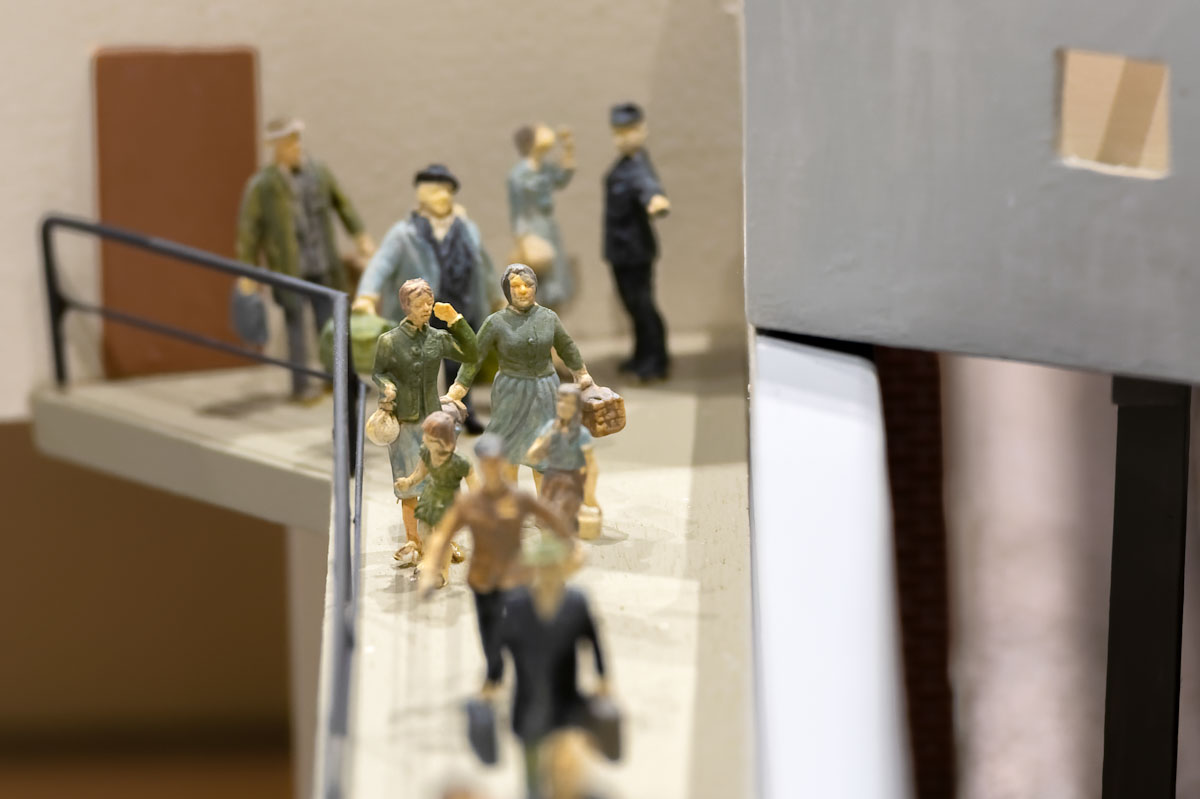
A family, having cleared medical screening, customs and immigration, makes its way down the ramp to where they will await their train.
Pregnant women
Recently a few pregnant women and some children were added to the model. Museum historian Steve Schwinghamer says that “the principal business of the medical facility here was…often either perinatal or postpartum care or care for sick children.” He explains that sometimes families would be delayed in departing Europe and an expectant mother was occasionally quite close to term upon arrival. In this situation, it would have been imprudent to board a train and risk going into labour during a train ride across one of the world’s largest countries. In this case, women may have stayed at Pier 21, being cared for by the nursing staff. When it was time to give birth, they would have done so in Halifax’s Grace Maternity Hospital.
“Easter Eggs”
“I wanted to add some fun tiny details for people to look at,” says Conlin. “So there's one crow, two rats and three seagulls. And you've got hunt them out.” The challenge is deliciously addictive. The only problem is that there is so more of the Museum to take in.
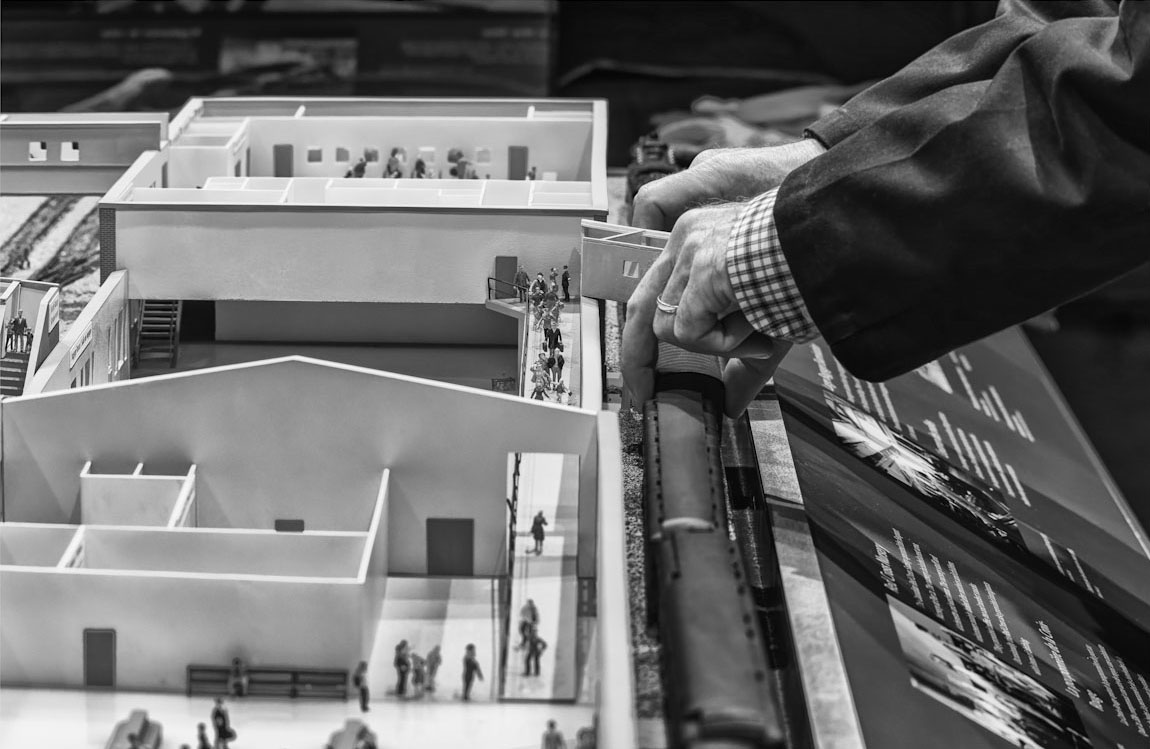
Curator Dan Conlin makes adjustments to the model train.
Not the only miniature Pier 21
There are other miniature versions of Pier 21 worth knowing about:
- The Little Canada attraction in Toronto features iconic miniaturized scenes from across the country. Pier 21 features in the Little East Coast section.
- Lego lovers will soon be able to buy a special Pier 21 Lego set from the Museum’s gift shop. The special collector’s item will be in store early this summer. Keep an eye out during your Canada Day visit.
- A model of the building is contained inside a plexiglass donation box. A small contribution can make a big impact on the Museum (and here’s how you can donate online!)
